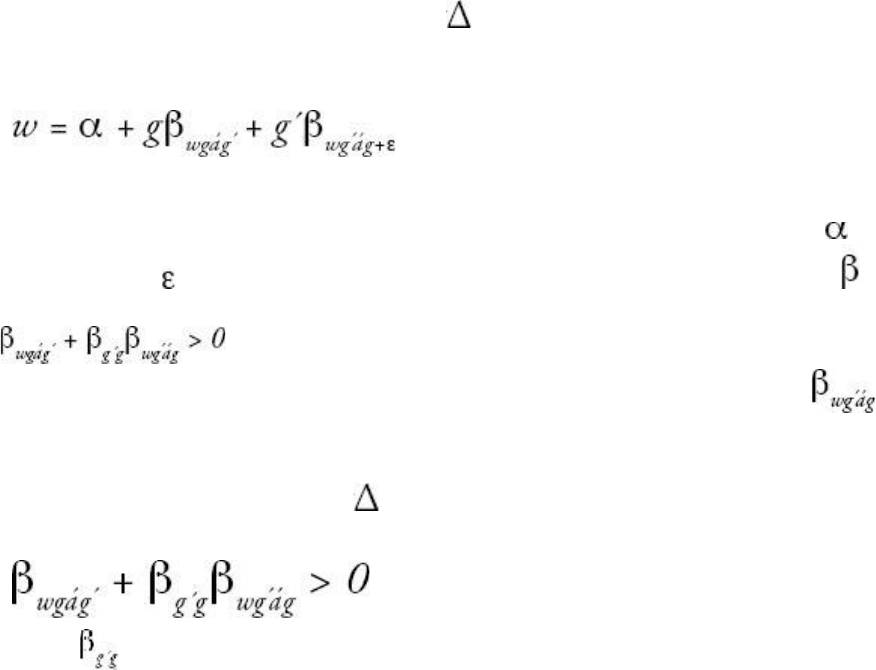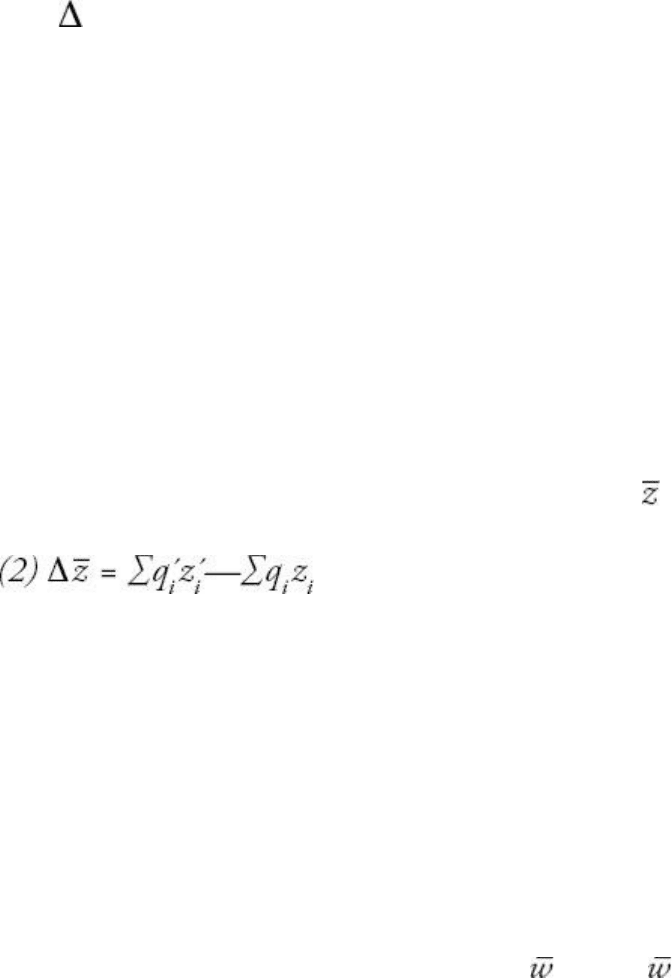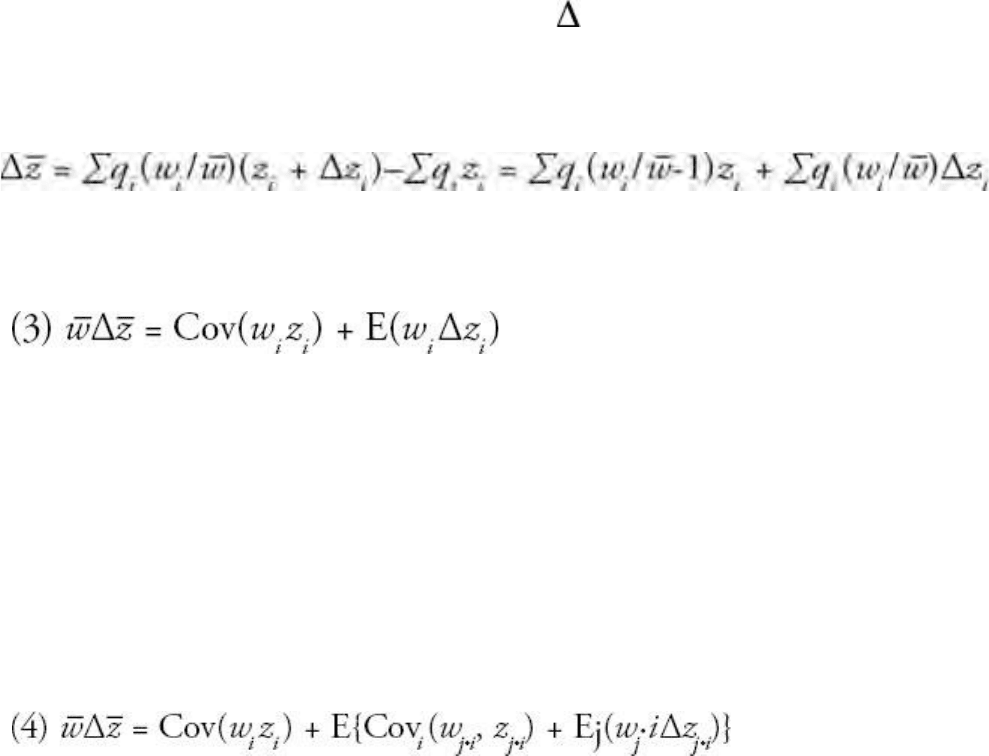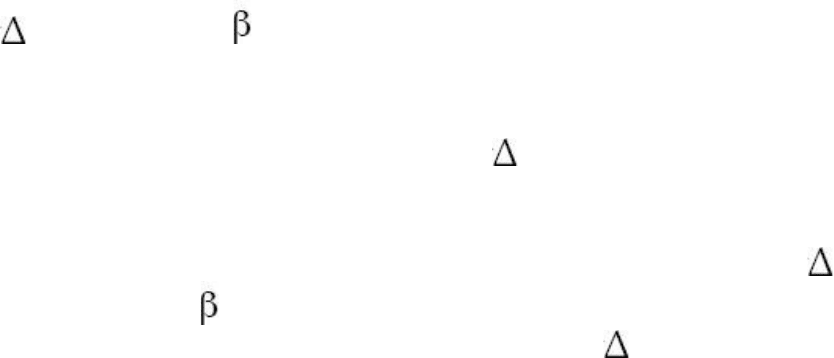Harman Oren Solomon. The Price of Altruism: George Price and the Search for the Origins of Kindness
Подождите немного. Документ загружается.

selfishness. No wonder the apostle concludes the tremendous 13th chapter of 1
Corinthians by emphasizing that of all the gifts of the Spirit, including faith and
hope, the greatest is love.
20
George Price lies in an unmarked grave in the Saint Pancras Cemetery in North
London, flanked by a proud sycamore and a young weeping willow. Too weak or
too ill or too heartbroken to follow this path peacefully, perhaps it was his
ultimate and enduring message to the world he left behind.

Appendix 1: Covariance and Kin Selection
1
Price did not himself show how Hamilton’s coefficient of relatedness in the
narrow sense of common descent could be replaced with association. The first to
do that was Hamilton in his 1970 paper. Later Queller expanded on this in a 1985
paper, “Kinship, Reciprocity and Synergism in the Evolution of Social
Behaviour,” clarifying further (if it had yet to be entirely clear) that association
need not mean genetic relatedness in the narrow sense of descent via direct
replication.
2
To see how the covariance equation translates into Hamilton’s kin-selection
equation, we begin with the equation w g = Cov (w, g) where g is the breeding
value that determines the level of altruism. The least-squares multiple regression
that predicts fitness, w, can be written as
where g´ is the average g value of an individual’s social neighbors, is a
constant, and is the residual which is uncorrelated with g and g´. The are
partial regression coefficients that summarize costs and benefits:
is the effect an individual’s breeding value has on its own
fitness in the presence of neighbors’ g´ (that is, the cost of altruism), and is
the effect of an individual’s breeding value on the fitness of its neighbors (that is,
the benefit of altruism). Substituting into the covariance equation and solving for
the condition under which w g > 0 gives us Hamilton’s inclusive fitness
equation (rB > C) in the following form
where is the regression coefficient of relatedness.
This derivation, performed by Hamilton in 1970
3
following Price, clearly shows
that it is natural to use statistical association instead of common descent. It is
considered the first modern theoretical treatment of inclusive fitness.
Among other things, it allows us to see that spiteful behavior, where an organism
acts in such a way as to harm itself in order to harm another organism even more,
can evolve since the product of a negative relatedness and a negative benefit to the
recipient (harm) is positive, meaning that benefit multiplied by relatedness can
outweigh the cost.

Appendix 2: The Full Price Equation and Levels of
Selection
1
Unbeknownst to George Price in 1968, the simple covariance relationship
(1) w z = Cov (w, z)
had already been worked out and published independently by two other men,
Robertson and Li, in 1966 and 1967 respectively.
2
But the uniqueness of the full
Price equation stems from the inclusion of the further, expectation term. Here is
the derivation:
Let there be a population in which each element is labeled by an index i. The
frequency of elements with index i is q
i
, and each element with index i has some
character, z
i
. Elements with a common index form a subpopulation that comprises
a fraction q
i
of the total population, and no restrictions are placed on how the
elements are grouped.
Now imagine a second, descendant, population with frequencies q´
i
and
characters z´
i
. The change in the average character value, between the mother
and descendant populations is
This equation applies to anything that evolves because z can be defined however
one likes. For this reason, the equation applies not only to genetics, but to any
selection process whatsoever.
What is special about the Price equation is the way in which it associates
statistically between entities in groups, a “mother” and “daughter” population.
Instead of the value of q
i
obtaining from the frequency of elements with index i in
the daughter population, it obtains from the proportion of the daughter population
derived from the elements in with index i in the mother population. If we define
the fitness of the element i as w
i
, the contribution to the daughter population from
type i in the mother population, then q´
i
=q
i
w
i
/ where is the mean fitness
of the mother population.
The character values z´
i
also use indices of the mother population. The value of z´
i

is the average character value of the descendants of index i. The way it is obtained
is by weighing the character value of each entity of the index i in the daughter
population by the fraction of the total fitness of i that it represents. The change in
character value for descendants of i is defined as zi = z´
i
–z
i
.
Equation (2) holds with these definitions for q´
i
and z´
i
. With a few substitutions
and rearrangements we derive:
which, using standard definitions from statistics for covariance (Cov) and
expectation (E) gives the full Price equation:
The two terms on the right-hand side of the equation can be thought of as the
selection and transmission terms, respectively. Covariance between fitness and
character represents the change in the character due to differential reproductive
success, whereas the expectation term is a fitness-weighted measure of the change
in character valued between the mother and daughter populations. The full
equation, therefore, describes both selective changes within a generation and the
response to selection.
But the addition of the expectation terms also allows to expand the equation to
show selection working at different levels. Here is how the equation can expand
itself:
where E and Cov are taken over their subscripts where there is ambiguity, and j·i
are subsets of the group i with members that have index j.
The recursive expansion of equation (3) shows that the transmission is itself an
evolutionary event that can be partitioned into selection among subgroups and
transmission of those subgroups. The expansion of the trailing expectation term
can continue (say from gene, to individual, to group, to species) until no change
occurs during transmission in the final level. Meanwhile, however, it will be
possible to see how much of the change in trait is due to selection at each of the
levels below.

Appendix 3: Covariance and the Fundamental
Theorem
Consider the reduced form of the Price equation
w z = Cov (w, z) =
wz
V
z
where w is fitness and z is a quantitative character. The equation shows that the
change in the average value of a character, z, depends on the covariance
between the character and its fitness or, equivalently, the regression coefficient of
fitness on the character multiplied by the variance of the character.
Since fitness itself is a quantitative character, z can be equal to fitness, w.
Then the regression
wz
equals 1 and the variance, V
w
is the variance in fitness.
So the equation shows that the change in mean fitness, w, is proportional to
the variance in fitness, V
w
. This is what most people took Fisher’s fundamental
theorem to mean: The change in mean fitness of a population depends on the
variance in fitness.
Price, however, showed that Fisher didn’t mean this in a general but rather in a
very specific way. Fisher had defined mean fitness in a way different than usually
construed. For him it related only to that portion of fitness dependent on the
additive genetic variance. All other components relevant to phenotypic
variance—including epistasis and dominance—were categorized as
“environment” and left out of the equation. Since it was known that epistatic and
dominance effects can reduce fitness, along with the obvious fact that the
environment can degrade, George interpreted Fisher’s fundamental theorem as
exactly true in its own terms, but not as biologically significant as Fisher had
made it out to be.
Acknowledgments
I was sitting beneath a tree in a small park in Paris when I first read about George
Price. It was 1999, and Andrew Brown’s The Darwin Wars: How Stupid Genes
Became Selfish Gods opened with a chapter called “The Deathbed of an Altruist.”
It was a mysterious story about a strange American who had come to London,
written an equation that drove him first to Christianity, then to selfless aid to the
homeless, and finally to suicide. There was some kind of connection between his
equation and his life. What a story! I thought. This was the stuff of movies.
At the time I was in the middle of a doctorate and, returning to Oxford, forgot
about Price. Seven years later in Jerusalem, while writing an essay review for the
New Republic on Lee Dugatkin’s book The Altruism Equation: Seven Scientists’
Search for the Origins of Goodness, the memory came back to me, though the
story had always remained in the back of my subconscious mind. Here was Price
again, just as enigmatic as before, killing himself on the altar of altruism. But as
with Brown, so too with Dugatkin: Price was afforded no more than a few pages.
Was this all that was known of him?
Soon I learned that a few people had written about Price somewhat earlier. The
source of all other accounts had been Bill Hamilton’s autobiographical book
Narrow Roads of Gene Land, in which the story of his meeting and subsequent
dealings with Price was first revealed. Though he himself had not known Price,
Steven Frank, a mathematical evolutionist, had also become interested in his life,
and written an article about his scientific contributions to evolutionary genetics in
the Journal of Theoretical Biology in 1995. Frank had even brought Price’s “The
Nature of Selection,” apparently rejected for publication many years before, to
posthumous print. So there were those who knew about him and cared.
But it wasn’t until I came across Jim Schwartz’s wonderful article “Death of an
Altruist” in the now-defunct magazine Lingua Franca that I really became
excited. The article was a beautiful exposition of the story, more detailed than
anything else that had been written. Somewhat relieved that what had been
referred to as “a biography” of Price was only ten pages long, I decided to contact
Schwartz. Amazed at how little had been written of this incredible story, I held
my breath and prayed that there were papers to work from. With any luck, I
thought, there would be much more still to tell.
And so my first and heartfelt thanks go to Jim Schwartz. In preparing his Lingua
Franca article Jim had contacted and met George’s two daughters, Annamarie
and Kathleen, and, as he put it to me over the phone, in the course of his research
had “grown very close to George.” Obviously George had been the kind of man
who, even from the grave, could stir strong emotions, and it was clear that Jim had
developed feelings for him. This makes it all the more special that in true
gentlemanly fashion, and in an altruistic spirit of the common pursuit of history,
Jim provided me with Kathleen and Annamarie’s contact information, and, more
important, with an introduction. Yes, there were papers, thank god. Jim wasn’t
certain that they’d be enough for a book, but I could try. Some early family
material existed in boxes at the offices of the Edison Price Lighting Company in
Queens. George’s own personal papers had been rescued in January 1975 by
representatives of the American Consulate in London. Others had been sent to
Edison Price some weeks later by Hamilton, who’d fought his own way into the
squat and come across more papers that the consulate men had overlooked. In
2003 Kathleen had donated a small portion of these papers to the British Library
in London, but the vast majority—notes, letters, diagrams, computer printouts,
diaries—had remained in the homes of the two sisters. Over the years a
substantial number of people had tried to reach the Price daughters to get their
hands on his papers, and it wouldn’t be easy gaining their confidence.
Soon I was conducting long transatlantic phone conversations from Tel Aviv with
Kathleen in San Francisco and Annamarie in Solana Beach. Understandably they
wanted to know who I was and what I wanted to do before opening up their
father’s treasure trove to a complete stranger. Gradually our conversations grew
warmer, and in the spring of 2008 I traveled to California to meet Kathleen and
Annamarie and finally consult the papers. That the papers provided a world of
insight into the details of George’s life, allowing me to reconstruct his story in its
full richness, I hope the book demonstrates. This was a joyous discovery, and
more than anything a huge relief. But what is more important to me is just how
kind and inviting and warmly hospitable Kathleen and Annamarie proved.
Sleeping in Kathleen’s home and staying up late nights over wine discussing her
memories, dining at Annamarie and her husband Ed’s table and being trusted to
share her deepest feelings and thoughts, rummaging through the papers together
with both sisters in their respective dens, were more than any lucky historian can
ever hope for. Like George, it was obvious, his daughters were special people, and
it had been my good fortune to gain their trust. It would be my burden now to tell
the story properly.
Precious little had been put on paper about George, but from the start I did not
want this to be just a biography: This was going to be a history of a much larger
quest. Already I had delved into the immense literature I would need to cover in
order to write the book. Others had written about the problem of altruism and the
evolution of cooperation, morality, and virtue. There were Richard Dawkins’s
classic The Selfish Gene, Robert Axelrod’s The Evolution of Co-operation, and
Matt Ridley’s The Origin of Virtue. There were Marc Hauser’s Moral Minds and
Frans de Waal’s Good Natured: The Origins of Right and Wrong in Humans and
Other Animals. There was Helena Cronin’s The Ant and the Peacock. And there
were Elliott Sober and David Sloan Wilson’s Unto Others: The Evolution and
Psychology of Unselfish Behavior, Richard Joyce’s The Evolution of Morality,
Samir Okasha’s Evolution and the Levels of Selection, and many others, popular
and academic. There were countless studies, articles, essays, and reviews. Some
were philosophical accounts; others technical, theoretical, or empirical
arguments; still others, like Cronin and Dugatkin, attempts at history. But the
more I read the more I felt the need for a book that, in relation to altruism, would
put history, science, biography, and philosophy all in one construction without the
burden of blowing a particular horn. Most studies advocated one form or level of
selection over another, one philosophy at the expense of its rivals, or were
overimpressed with the ability of evolution, and a reductive genetics, to explain
human goodness. It made it difficult to see the bigger picture, to appreciate the
complexity and the nuances. Most acute was the lack of a good encompassing
history. Certain pieces of the historical puzzle, like Adrian Desmond’s magisterial
Huxley, Gregg Mitman’s wonderful The State of Nature, and Marek Kohn’s
stunningly beautiful A Reason for Everything, were in fact already in place. But
that wasn’t enough. The story of modern man’s attempt to fathom kindness was a
rich one, involving countless disciplines, characters, historical contexts, and
scientific facts. It seemed to me that it had yet to be fully told.
Inspired by a novel I had read by the Peruvian author Mario Vargas Llosa, The
Storyteller, I soon saw that the best way to tell the greater tale of attempts to crack
the mystery of altruism, going back to Darwin, was to use George’s life as a
counterpoint. To get to the core of the problem, to really touch “Wittgenstein’s
wall,” there was no better way than to let George’s incredible story lead the way.
By creating a double helix–like structure for the book, George’s own personal tale
and the greater problem of the evolution of altruism would reflect and resound off
each other, finally becoming inextricably interwoven. Constructing the story this
way, I could hope to show the extent to which scientific pursuits are embedded in
the people and cultures that are responsible for them. Celebrating the majesty of
science, I could also point to its limits; altruism—the meeting place of biology
and culture—would be the perfect conduit. If, ultimately, there can be no
scientific arbitration of the question of the existence of true, genuine selflessness
in man, George’s tragic life might be the closest one could come to understanding
why.
Beyond my thanks to all the authors, scholars, and scientists on whose
foundations I built to construct my story, I would also like to thank the many
people who generously offered to answer my questions, whether in face-to-face
interviews or via correspondence. Bill Hamilton’s sister Janet and her husband,
Rollin, generously hosted me in their Hampshire home, and I shall always
remember the three of us by the fireplace in the evening listening to Tim
Jackson’s fictionalized BBC radio play about George, also titled Death of an
Altruist, embers crackling in the fire. Earlier that day Janet had taken me to meet
Tim, a professor of Sustainable Development at the University of Surrey and an
award-winning radio playwright. I thank Tim, too, for a wonderful afternoon of
discussion. His enthusiasm about George was contagious.
Thanks as well to Richard Lewontin, who devoted an afternoon and many
subsequent emails to trying to explain Price’s import and trying to figure out
together where his scientific style or approach might have come from. The same
goes for Warren Ewens, Danny Cohen, Ilan Eshel, Ariel Rubenstein, Joel Cohen,
David Haig, and James Crow. I also want to thank Robert Trivers, Steven Frank,
and Alan Grafen for answering important questions over the phone or in writing,
and Mark Borrello, Ehud Lamm, Nathaniel Comfort, Marc Hauser, Jim
Griesemer, Gar Allen, Michael Dietrich, Eva Jablonka, Marion Lamb, Stephen
Stearns, David Kohn, Salit Kark, Alice Nicholls, Everett Mendelsohn, Razi
Greenfield, and Ayelet Shavit for rich and informing conversations on the subject
and, in some cases, for reading parts of the manuscript. Special thanks to Peter
Godfrey Smith, who, following a lively conversation at a banquet in Brisbane,
Australia, generously took the time to read the entire manuscript and provided
invaluable comments. Daniel Kevles has been a warm critic and friend, and I
thank him, together with Dudley Andrew and Howard Bloch, for the opportunity
to discuss my ideas during a wonderful visit as the guest of the Whitney
Humanities Center at Yale. Heartfelt thanks go to George C. Williams, sadly
unwell but always kind spirited, for his friendly words of encouragement.
Those who knew George Price proved invaluable informants. M. Dan Morris and
Richard A. Bader, Stuyvesant classmates of George, shared colorful memories of
New York City in the 1930s. George’s old friend from his Chicago days, Al
Somit, met me in Solana Beach and shared wonderful stories before and after in
correspondence; I thank his wife, Leyla, too, for her recollections. Former
colleagues at Harvard’s Department of Chemistry, Gilbert Stork and Leonard
Nash, were kind enough to answer queries. At UCL, Ursula Mittwoch and Sam
Berry knew George and kindly shared their memories, as did Newton E. Morton
on C. A. B. Smith. Christine Hamilton was kind enough to share her memories of
George’s visits at her and Bill Hamilton’s Berkshire home, including the very last
one before his suicide. I thank Bill’s close friend Peter Henderson for sending me
a beautiful description of their time in the Brazilian jungles together, as well as
Richard Dawkins for sharing a few memories of Bill and George.
No scholar can do without archives, and many people helped me in this respect.
I’ve already mentioned Kathleen and Annamarie Price. A special further thanks
goes to Emma Price, Edison Price’s daughter, who welcomed me into her offices
in Queens at the Edison Price Lighting Company and provided generous access to
invaluable family letters and records. Jeremy Johns at the British Library proved
most helpful in navigating through the Price, Hamilton, and Maynard Smith
papers, and I thank him warmly for sending me photocopies and for his general
kind spirit. Katherine T. Bendo of the Stuyvesant Alumni Association was
immensely helpful to me in uncovering George’s high school past. Barbara
Meloni at Harvard University Archives, and David Pavelich and Allie Tichenor at
Chicago University Archives were wonderful, as was Patricia Canaday at
Argonne National Laboratory, Marcia Chapin at Harvard Chemistry, Dawn
Stanford at IBM, and Karen Klinkenberg and Jake Williams at the University of
Minnesota Medical School. In England the broad knowledge of Peter S. Harper
helped me get a grip on the genetics scene at the time, and Brian Parson, funeral
specialist, helped me understand how deaths were handled. Immensely helpful
were the Tolmers gang, who with great candor and color shared memories both of
George and of the times. I thank Nick Wates, Atalia Ten Brink, Ches Chesney,
Corrine Pearlman, Paul Nicholson, and Alon Porat. Special thanks go to Asher
Dahan and Shmulik Atia, with whom I spoke at length about George’s last days
and suicide. Once again I thank Jim Schwartz for generously sharing with me
copies of correspondence between George and Joan Jenkins that he himself had
gotten from Jenkins before she died. Finally I thank Sylvia Stevens who, when I
tracked her down over the phone, after a long silence, said, “You’ve rocked my
world on a Friday afternoon!” Sylvia shared sensitive memories of George toward
the end of his life that helped illuminate his mental state and gentle spirit.
Life is no fun without friends, and luckily I have many of these and really good
ones. First of all, an enormous thank-you to Ben Reis, my loyal and close friend,
who was also throughout the writing my sole and assiduous reader. This book is
infinitely better due to his extraordinary talents. Toda Ben Adam, and makssssim.
Thanks too to David Schisgall, who took the time to read the manuscript and like
a good friend told it to me like it is. My friend Noah Efron, a prince among men,
afforded me a sabbatical year from my teaching duties at Bar Ilan University so
that I could direct all my energies to the writing, and, as always, was the most
loving, smart, funny colleague anyone could ever have. I thank Eva Jablonka, too,
for her encouragement and wise words of counsel, as well as for her example of
how history, science and philosophy all need to be considered as part of a whole.
The Halbans—Martine, Peter, Alexander, and Tania—were loving and fun hosts,
always, on my frequent visits to London. Marty Peretz has for years been a special
friend—generous, caring, and huggably irreverent—and via his introduction of
me to Leon Wieseltier, acted as something of a godfather to the project, which
began in miniature as a New Republic essay. Samantha Power not only
encouraged me to write, among hippos on the Zambezi River, but also introduced
me to her magnificent agent, Sarah Chalfant, who became my friend and without
whom none of this would have happened. Thank you, Sam, and thank you, Sarah.
I also am grateful to my old friends Elizabeth Rubin, Maya Topf, and Ghil’ad
Zuckermann for early and sustained conversations about what this book was
going to be about, and to my lifelong special New York families, Sam and Joann
Silverstein and Hugh and Marilyn Nissenson, for always being in my heart. I am
saddened that Erich Segal, whom I continue to love dearly along with Karen,
Miranda, and Chessy, passed away before the book was published and long before
